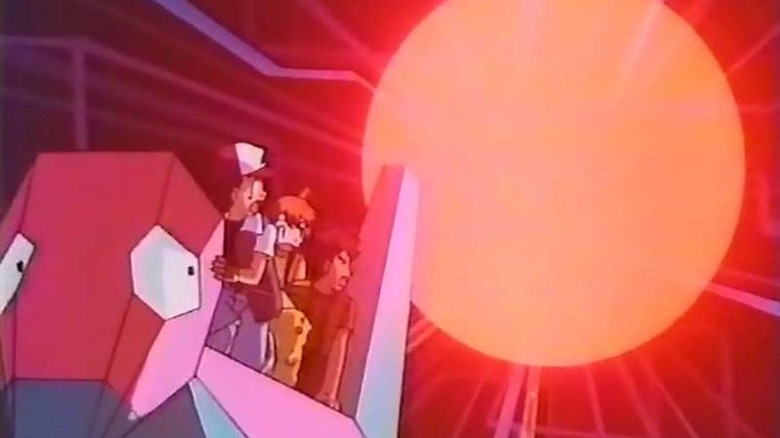There are many nice, unforgettable episodes (and films!) of the basic anime sequence “Pokémon,” which follows the adventures of younger Pokémon coach Ash Ketchum and his mates Brock and Misty, however sadly, there’s one episode that is unforgettable for the entire improper causes. Early throughout the present’s preliminary run in its native Japan simply because the present had already grown immensely standard, an episode triggered a mass medical occasion for the kids watching, getting the episode banned ceaselessly.
The thirty eighth episode of the primary season, “Dennō Senshi Porygon,” aired solely as soon as, on December 16, 1997, as a result of it contained flashing pink and blue lights that triggered lots of of kids to have robust speedy bodily reactions, together with seizures. In keeping with a retrospective on the occasion by The Guardian, 685 kids had been taken by ambulance to hospitals, and round 12,000 reported signs over the subsequent few days. Whereas the epileptic seizures brought on by the flashing lights contributed to the quantity, it was solely a small proportion, and the mass response puzzled medical doctors and scientists for years. Within the speedy aftermath, nevertheless, the primary aim was to forestall something prefer it from occurring once more. So what truly occurred, and the way did the world react?
Pokémon’s flashing lights triggered actual issues
Within the episode, the electric-type Pokémon Pikachu makes use of an assault in opposition to pc viruses inside a digital world that trigger pink and blue flashing. Whereas “Pokémon” had used alternating flashing earlier than, it had by no means triggered this sort of mass response. The day after the present aired, the station issued an apology and suspended manufacturing and airing till an investigation was carried out. The sequence was pulled from rental cabinets and the Japanese Well being and Welfare Ministry even held an emergency assembly to debate what to do. Because it appeared the particular colours, size, and sort of flashing had been at the least partially accountable, it was deemed protected to deliver the present again on the air about 4 months later. TV Tokyo would put warning labels on all episodes, much like the photosensitivity warnings that appeared (and nonetheless seem) earlier than many video video games. Episode 38 would by no means be aired once more and wouldn’t even be dubbed into English for a lower model when the present started airing in syndication within the United States a 12 months later.
When the present returned in Japan following its hiatus, an evidence was aired for kids firstly of the episode to assist them perceive what had occurred and reassure them that it will not occur once more. The “Pokémon Panic,” because it grew to become known as, nonetheless has no official rationalization, although many imagine it was a mixture of a small variety of kids having seizures whereas many others suffered from the consequences of mass hysteria. Although there have been different, extra restricted instances of individuals having seizures attributable to photosensitivity, there hasn’t been something fairly just like the “Pokémon Panic” earlier than or since.


